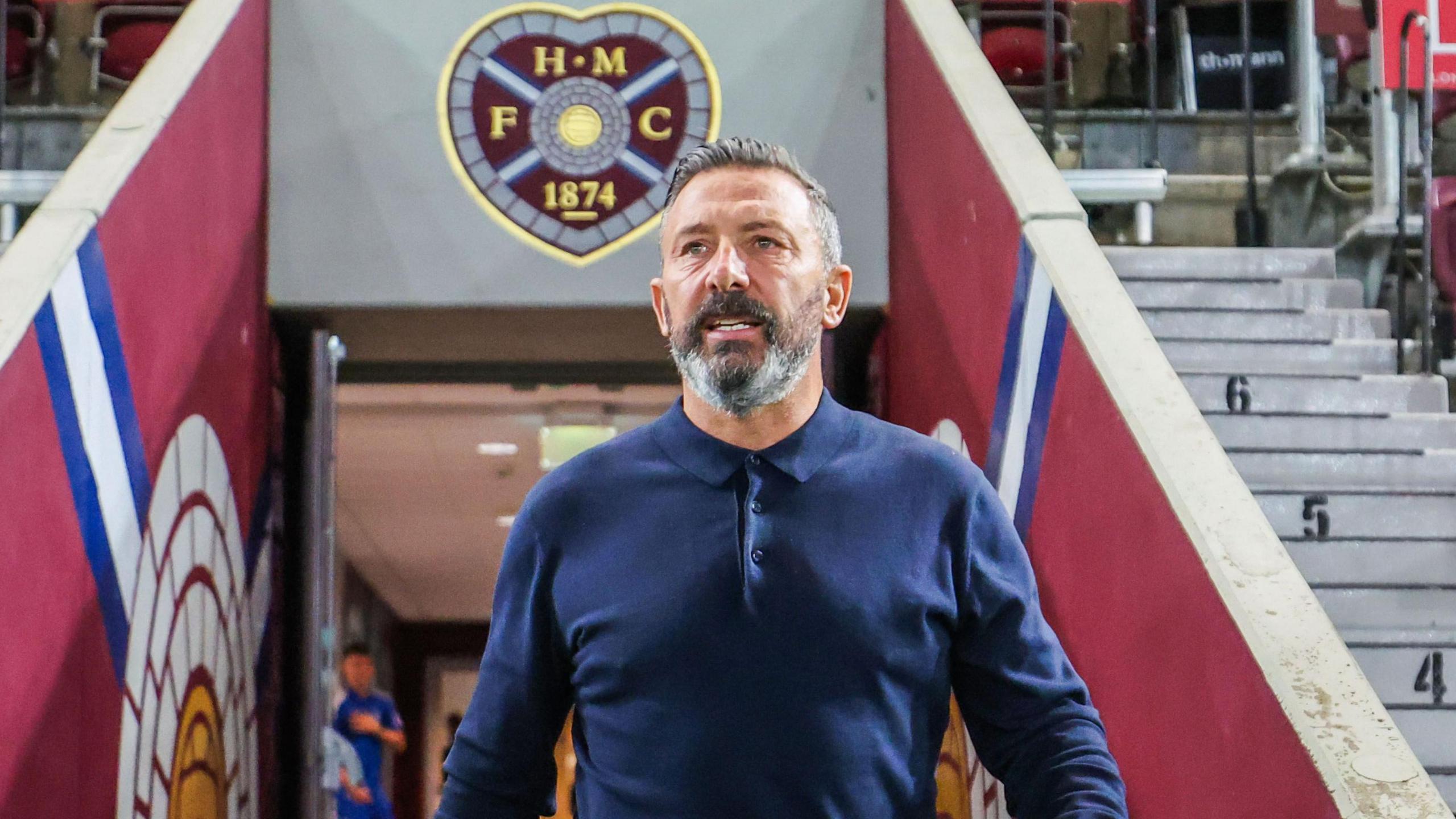What might next season's Scottish Premiership look like?

- Published
With the Scottish Premiership play-offs coming to a dramatic conclusion on Monday, another captivating domestic campaign in Scotland has ended.
A fourth successive title for Celtic, a spectacular resurgence for David Gray's Hibernian and Scottish Cup glory after 35 years for Aberdeen.
St Mirren continue to defy the odds and their doubters under Stephen Robinson, Dundee United shone on their return to the top flight, while St Johnstone and Ross County were relegated to the Championship, replaced with Falkirk and Livingston.
But what exactly does the season just gone tell us about how Scottish football is evolving and can it tell us anything about the season to come?
Tears, cheers & beers as 100,000 Aberdeen fans greet heroes
- Published25 May
What were the key games in Celtic's title triumph?
- Published26 April
Valakari wants to lead 'beautiful' St Johnstone back up
- Published27 April
Greater focus on possession & control?
Thanks to data supplied by Opta, it is possible to view wider trends across the division and whether the style of football being played in Scotland is shifting.
In the season just gone, compared to the 2019-20 season, there were more passes per game, a higher percentage of passes completed and fewer forward passes.
It suggests more of a focus on possession and perceived control, choosing the right moment to attack.
Only 16.1% of passes made were deemed to be 'long', down from 19.8% in 2019-20.
There were also fewer fouls, suggesting a cleaner league overall. Whether or not that is a reflection of refereeing directives or a tactical shift is difficult to assess.
Part of that could be behind a move to more foreign managers and head coaches in the Premiership.
At the end of the 2019-20 season, there was one manager from outside the UK and Ireland - Daniel Stendel at relegated Heart of Midlothian.
There were none at any stage of the following campaign.
Australian Ange Postecoglou and Dutchman Giovanni van Bronckhorst took charge at Celtic and Rangers, respectively, for the 2021-22 season and more teams outside the Old Firm started to look overseas from there.
In the season just finished, Swedish boss Jimmy Thelin got Aberdeen off to a flying league start and ultimately won silverware, German coach Michael Wimmer took charge of Motherwell for 12 matches before returning to his homeland earlier this month, while Finland's Simo Valakari was unable to keep St Johnstone up having been appointed as Craig Levein's successor in October.
More goals & better chances
What does that change in style mean for the quality of the overall product though? Is the football on show more exciting than five years ago?
Well, in short, yes.
There were 2.96 goals per game in the 2024-25 season, the highest figure from any of the past five seasons.
More goals are being scored from what Opta define as 'fast breaks' - where teams attack having won possession back.
Fast-paced goalmouth action is no bad thing and 7% of goals in the Premiership were scored from 'fast breaks' in 2024-25. Compare that to 2.9% in 2020-21, or just 2.0% the season after.
Expected-goals are also steadily rising season on season, suggesting a better quality of chances being created across the league.
There were 2.9 xG per game across the most recent Premiership season, versus the 2.59 xG registered per game in 2019-20.
That xG figure still trails some of Europe's other leagues though.
There are more goals and higher xG per game in the French, German, Swiss and Norwegian top flights.
The English Premier League, in comparison to the Scottish Premiership, had 3.0 xG and 2.9 goals per game in 2024-25.
New eras beckon in ever-changing Premiership

Derek McInnes has replaced Neil Critchley in the Tynecastle dugout
Looking forward, there is a theme of uncertainty and upheaval across the Premiership, with at least - for now - five clubs going into next season under new management.
Rangers are without a head coach, without key backroom staff and in a state of limbo as they wait on a proposed takeover by American investors.
A major rebuild of the playing squad is once again on the cards at Ibrox but cannot feasibly commence until the vacant roles are filled in the dugout and in the boardroom.
Having backed the inexperienced Steven Naismith and the unproven Neil Critchley as head coach in the past two seasons, with varying degrees of success, Hearts have changed tack and gone to a tried and test performer.
Derek McInnes takes the reins at Tynecastle with no doubts over his credentials and with Tony Bloom's financial backing and Jamestown Analytics' wide-reaching database behind him.
Stuart Kettlewell has been tasked with filling McInnes' sizeable shoes at Kilmarnock, while Motherwell and Dundee are still in the market for a new boss after the departures of Michael Wimmer and Tony Docherty, respectively.
In such a tightly-contested division - outwith the Old Firm - it is understandable why so many teams chase fresh ideas and the momentum they can bring.
Change does not guarantee success though and it remains to be seen whether the five new regimes are able to spark a change in fortunes.